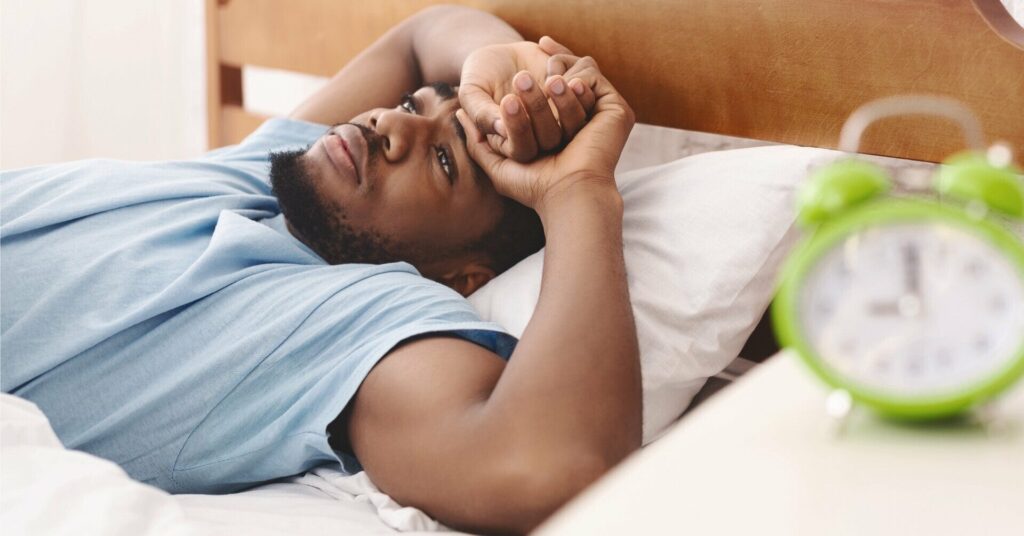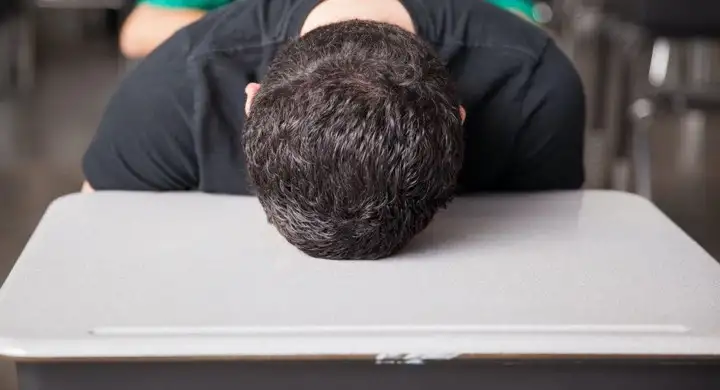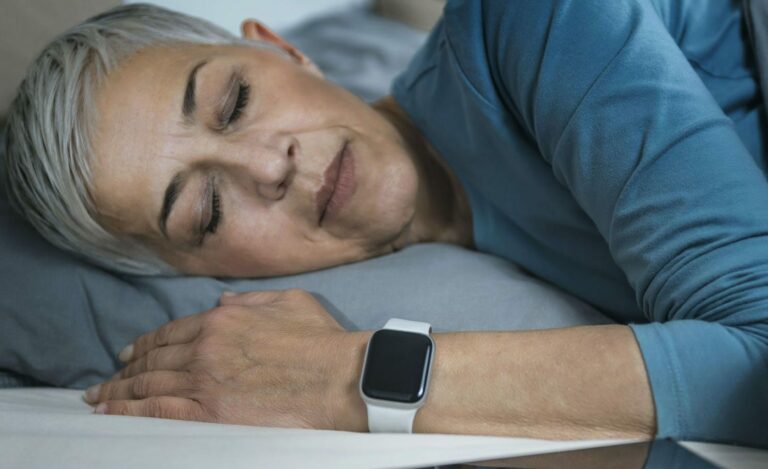SRI’s Human Sleep Research Program is conducting groundbreaking research to address modern sleep challenges
Authors: Fiona C Baker, Senior Program Director, Human Sleep Research Progam; Massimiliano de Zambotti, Research Scientist, Human Sleep Research Progam; SRI Biosciences, Center for Health Sciences

“The minute anyone’s getting anxious I say, ‘You must eat and you must sleep.’ They’re the two vital elements for a healthy life.” — Francesca Annis
We are a sleep-deprived society. More than 35 percent of American adults and a whopping 68.8 percent of high-school age students get less than the recommended 7 hours of sleep each night.¹
Many of us know about the consequences of inadequate sleep — everything from memory problems and irritability to obesity, diabetes and depression.² We are more and more familiar with the causes as well, including stress, technology, caffeine, alcohol and poor sleep habits. And yet, even as we’ve learned about the consequences and causes of inadequate sleep over the past 20 years, the number of people affected by sleep problems has continued to increase.³
Why?
Well, first of all, sleep is very difficult to study. While researchers have advanced our knowledge about the science behind sleep dramatically in the past couple of decades, there is a lot we still don’t know. Additionally, as our culture has continued to evolve, so have the factors (such as social media, longer workdays and increased stress levels) that contribute to inadequate sleep. Finally, while a range of new technologies have demonstrated potential to help solve sleep problems, more research must be done to fully understand their applications and usefulness.
Sleep research is a priority at SRI International. Scientists in our Human Sleep Research Program have performed empirical studies across many different populations and conditions, including ground-breaking studies about developmental changes in sleep and the brain across adolescence; the role of hot flashes and hormones in sleep disturbances in midlife women; sleep disturbances in alcohol use disorder, and the pathophysiology of insomnia. Results from these studies have been published in more than 100 peer-reviewed publications. Currently, we are exploring the role of sleep in health and factors that contribute to inadequate sleep, as well as multiple technologies that could help a range of groups — including adolescents, midlife women going through menopause, and elderly individuals — sleep better.
Here are just a few of the most recent sleep findings and recommendations that our team has published:
How does stress impact sleep in adolescents? (Sleep Health, July 2020)
- Overview: Our team conducted a study to help determine why — starting in adolescence — being female is a strong risk factor for the development of insomnia. Working with 106 healthy adolescents who are part of SRI’s National Consortium on Alcohol and Neurodevleopment in Adolescence (NCANDA) sleep study, we explored how stress disrupts sleep in girls vs. boys. We discovered that while stress impacts sleep and autonomic nervous system (ANS) activity in both boys and girls, girls experienced greater ANS alterations, suggesting they may be more vulnerable to sleep-specific stressors than their male counterparts.
- Implications: These findings can help determine the psychophysiological basis of insomnia, better characterize its predisposing and precipitating factors, and ultimately develop targeted treatment options.
Can virtual reality tools and breathing techniques help adolescents sleep better? (Sleep, August 2020)
- Overview: This study evaluated whether immersive virtual reality technology (VR) and slow breathing could help high school students achieve better sleep. After applying these techniques in 29 students, we found that they helped increase sleepiness, decrease alertness and decrease the time it took for individuals to fall asleep. This was true both for students who already had insomnia and those who didn’t.
- Implications: These results suggest the potential of combining VR technologies and breathing relaxation techniques as a novel tool to treat teenage insomnia and other sleep disturbances, which could be suitable for at-home application.

How does drinking alcohol in the evening affect adults’ sleep-related cardiovascular function? (Sleep, July 2020)
- Overview: We know alcohol negatively impacts sleep. This study sought to clarify whether (and how much) moderate alcohol consumption before bedtime affects cardiovascular functioning during sleep. We evaluated 26 healthy adults after giving each of them no alcohol, one to two standard drinks, or three to four standard drinks. Study findings show that consuming any alcohol before bedtime — even moderate amounts — affects cardiovascular functioning during sleep in multiple ways.
- Implications: While further research is needed to evaluate the potential cardiovascular risk of evening alcohol consumption, this study suggests that even “moderate” consumption can have a negative impact on cardiovascular restoration during sleep. These findings could be particularly important in light of the recent 2020 Dietary Guidelines Advisory Committee’s Scientific Report, which recommends decreasing the amount of alcohol consumption classified as “moderate” for men.

How can we use consumer sleep technologies to study sleep? (Sleep, September 2020)
- Overview: New sleep-tracking devices, particularly consumer sleep technologies (CSTs) such as fitness watches, are increasingly being used in research and medical settings and have significant potential to improve the study of sleep. However, the accuracy and reliability of these technologies are still largely unknown. SRI scientists developed standardized, step-by-step guidelines to help researchers evaluate the performance of specific CSTs, and are making these guidelines broadly available through open-source code.
- Implications: The new guidelines can help standardize and improve studies evaluating the use of CSTs in sleep research, and accelerate their adoption in situations where they have proven value.
One day we’ll solve the problem of sleep, so that millions of people can lead healthier, happier lives. Our team at SRI is committed to helping the world get there. Visit this link to learn more about our work.
The Human Sleep Research Program at SRI is directed by Dr. Fiona C. Baker, with Dr. Massimiliano de Zambotti (sleep technology lead), Dr. Devin Prouty (clinical lead) and Dr. Ian Colrain (expert advisor), supported by post-doctoral researchers (Dilara Yuksel, Elisabet Alzueta and Orsolya Kis) and a team of research assistants.
Massimiliano de Zambotti, PhD, spoke with Medscape Medical News on his and Human Sleep Lab’s research of combining immersive VR and slow breathing techniques to help promote bedtime relaxation and improve overall sleep quality in adolescents.
The content is solely the responsibility of the authors and does not necessarily represent the official views the National Institutes of Health.
1. https://www.cdc.gov/sleep/data_statistics.html
2. https://www.nichd.nih.gov/health/topics/sleep/conditioninfo/inadequate-sleep



